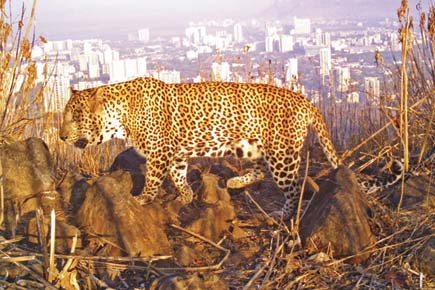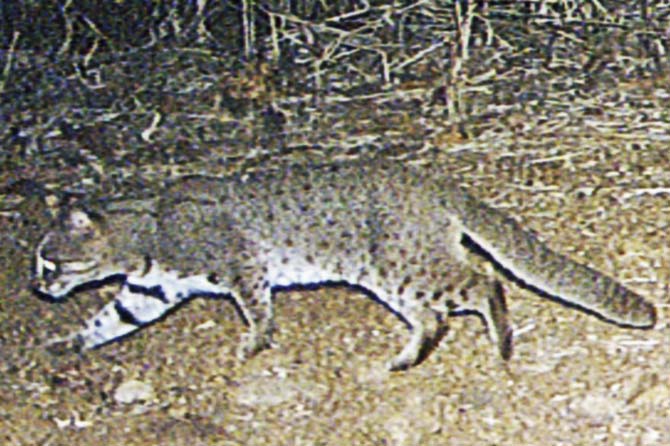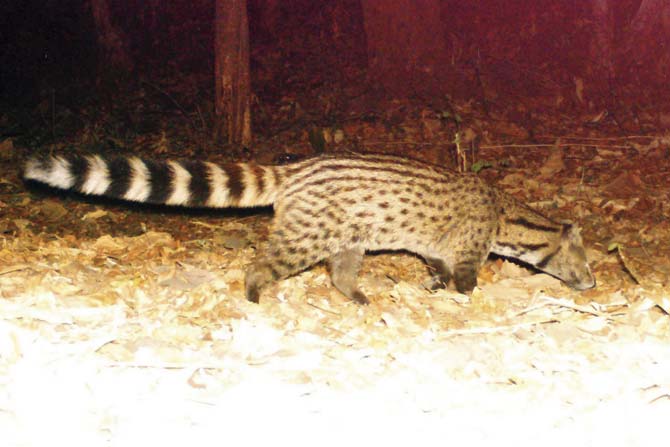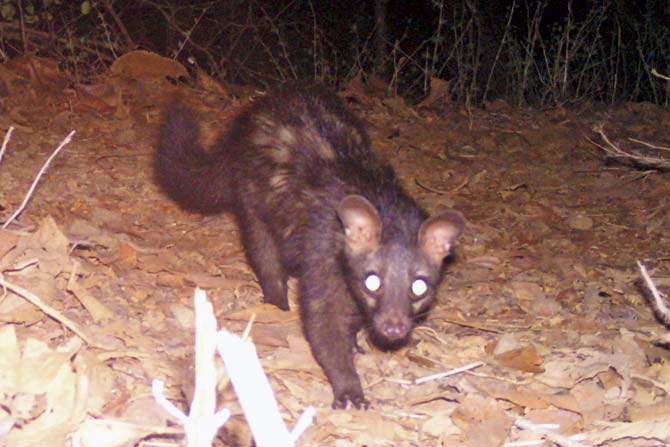Despite MMRC’s claims that the Metro III site in Aarey Colony had no wildlife, an expert study found 35 leopards living in the vicinity, of which at least two frequent Aarey

Leaving no doubt that the Mumbai Metro Rail Corporation (MMRC) was wrong in its claims that there is ‘no wildlife’ at Aarey Colony, an expert study yesterday revealed that there are at least two leopards that inhabit or frequent the colony, while another 33 leopards reside in the adjoining Sanjay Gandhi National Park and surrounding areas.
ADVERTISEMENT
Also Read: Sanjay Gandhi National Park gets student's help in leopard census

Among the highlights of the camera trapping study were images of leopards in urban setting such as this one, set against the backdrop of Manpada, near the Thane side of the national park. Pics/Nikit Surve/SGNP
In its zeal to quell concerns about the environmental cost of the Metro III project slated to pass through Aarey Milk Colony at the cost of 2,298 trees and the loss of habitat for local wildlife the MMRC had submitted an Environment Impact Assessment (EIA) report to a Japanese funding agency stating that the proposed Metro car depot in Aarey would have no major ecological impact since there was no wildlife at the site (‘Did MMRC lie to get Rs 5,000 cr from Japan for Metro?’, February 12).
 The study also made a rare sighting of the Rusty-spotted cat on the Shilonda trail
The study also made a rare sighting of the Rusty-spotted cat on the Shilonda trail
But when Nikit Surve, a student researcher from the Wildlife Institute of India (WII), conducted a 45-day camera trapping exercise to study the leopard population and movement patterns in and around the national park, he found that not only were there 35 leopards residing at the park and the adjoining areas, two of the big cats frequented Aarey, which acts as a buffer corridor to SGNP.
Caught on camera: Leopard on the prowl in Borivli colony

Small Indian civet
“In the 45 days, we found that the estimated number of leopards in the 140-sq km area, where we conducted our camera trapping, is 35,” said Surve, adding, “The data obtained using the camera traps helped us in getting pictures of two different leopards in Aarey.” This, then, raises the question: did the MMRC conduct proper scientific studies before it came to the conclusion that there was no wildlife in the area?

Palm civet
The Metro agency has claimed several times in the past that it had carried out extensive research before preparing the EIA report. Notably, even the BMC’s Detailed Project Report (DPR) for the Goregaon-Mulund Link Road (which will also pass through Aarey) stated that the area does not have a rich ecology.

Wildlife Institute of India student Nikit Surve. Pic/Sayed Sameer Abedi
The study
From December 5, 2014 to April 15 this year, Surve carried out the study, ‘Ecology of leopards in SGNP with special reference to its abundance, prey selection and food habits’ under the supervision of researchers Dr S Sathyakumar and Dr K Sankar from WII, and Dr Vidya Athreya from the Wildlife Conservation Society (WCS).
Mumbai: SGNP leopards move into a bigger, better home
Not only was camera trapping carried out for 45 days from February onwards, in the later stages, leopard scat was also collected and sent to the lab to gather information about the prey base of the animal.
Also read: Karnataka scientists estimating leopard cat population in Western Ghats
The findings from the exercise were disclosed yesterday at the SGNP, in the presence of project mentor Dr Athreya, Assistant Principal Chief Conservator of Forest Suresh Thorat, SGNP director Vikas Gupta and Assistant Conservator of Forest Santosh Saste.
 Subscribe today by clicking the link and stay updated with the latest news!" Click here!
Subscribe today by clicking the link and stay updated with the latest news!" Click here!






